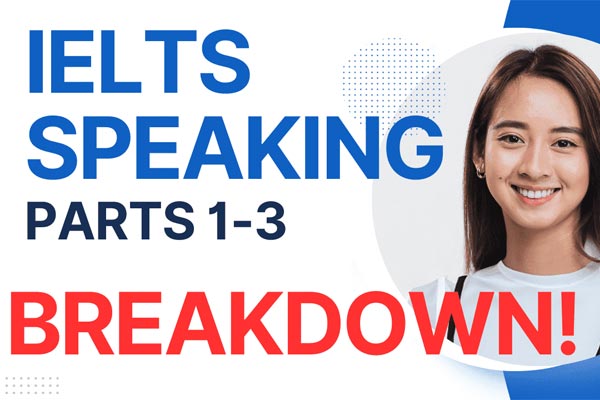Many IELTS test-takers believe that the Speaking test is just a short chat with the examiner. While it may look like that on the surface, each part of the IELTS Speaking test is designed to assess a different skill. Part 1 and Part 3, in particular, differ in the type of questions as well as in the kind of answers expected. Knowing how to adjust your language and approach between these two parts can make a major difference in your band score.
The structure of the IELTS Speaking test
The Speaking test has three parts:
- Part 1: Introduction and basic questions
- Part 2: Cue card (you speak on a given topic for 1–2 minutes)
- Part 3: Discussion based on the cue card topic
While Part 2 acts as a bridge between the two, Part 1 and Part 3 stand at opposite ends in terms of tone, depth, and complexity.
Part 1: Simple, direct, and personal
Part 1 feels like a warm-up. The examiner usually asks questions related to you, your life, and your daily experiences. Topics often include your hometown, hobbies, work, studies, food, travel, or friends.
The main aim here is to check your ability to communicate naturally in familiar situations. Therefore, your answers should be short, crisp, and conversational.
For example:
Question: Do you enjoy cooking?
Answer: Yes, I do. I’m not an expert, but I like trying new recipes on weekends.
Notice how the answer is brief and natural. You don’t need to sound too formal or give long, structured responses. It’s perfectly fine to use fillers like “Well…” or “Actually…” occasionally, as long as your tone stays friendly and fluent.
In short, Part 1 is about being yourself — showing that you can handle everyday English without hesitation.
Part 3: Detailed, thoughtful, and formal
By the time you reach Part 3, the examiner expects more depth in your language. The questions are linked directly or indirectly to your Part 2 cue card topic. For instance, if your cue card was about “a time you helped someone,” Part 3 might include questions like:
- Do you think people are becoming less helpful nowadays?
- How can schools encourage students to help others?
Here, the examiner is testing your ability to discuss abstract ideas, express opinions, and justify them logically. So, your answers must be more detailed and structured.
Example:
Question: Do you think people are becoming less helpful nowadays?
Answer: I think so, yes. Many people are too busy with their own schedules, and technology has made social interactions more limited. However, when real help is needed, most people still step forward.
This kind of answer reflects reasoning, balance, and vocabulary variety — all of which help raise your band score.
Key differences between Part 1 and Part 3
While both parts assess your speaking ability, they do so at different levels.
- Purpose: Part 1 checks natural fluency; Part 3 tests analytical thinking.
- Question type: Part 1 is personal and factual; Part 3 is general and opinion-based.
- Connection: Part 1 questions are independent; Part 3 follows the theme of Part 2.
- Answer length: Part 1 = short and clear; Part 3 = longer and more reasoned.
- Language tone: Part 1 = conversational; Part 3 = slightly formal.
Understanding these differences helps you adjust your speaking style automatically.
Why adapting your tone matters
In Part 1, using overly formal words or long sentences can sound unnatural. The examiner wants to see spontaneity, not memorized vocabulary. On the other hand, in Part 3, staying too casual might make your answers appear shallow. You need to balance natural fluency with analytical depth — that’s the skill advanced speakers display.
Why guided practice is essential
Many candidates struggle not because their English is weak, but because they don’t recognise these shifts in tone and structure between the parts. Knowing what to say is one thing, but knowing how to say it in the right way takes trained observation and correction.
At Focus Education, we train students to handle every part of the IELTS Speaking test strategically. Our trainers conduct mock speaking sessions, give instant feedback, and help students develop confidence in both conversational and academic English. Whether you’re aiming to polish fluency or strengthen coherence and vocabulary, guided sessions make a visible difference. Understanding the difference between Part 1 and Part 3 is not just about scoring well — it’s about learning to communicate in a way that fits the situation. And with expert direction, you can master both with ease.



